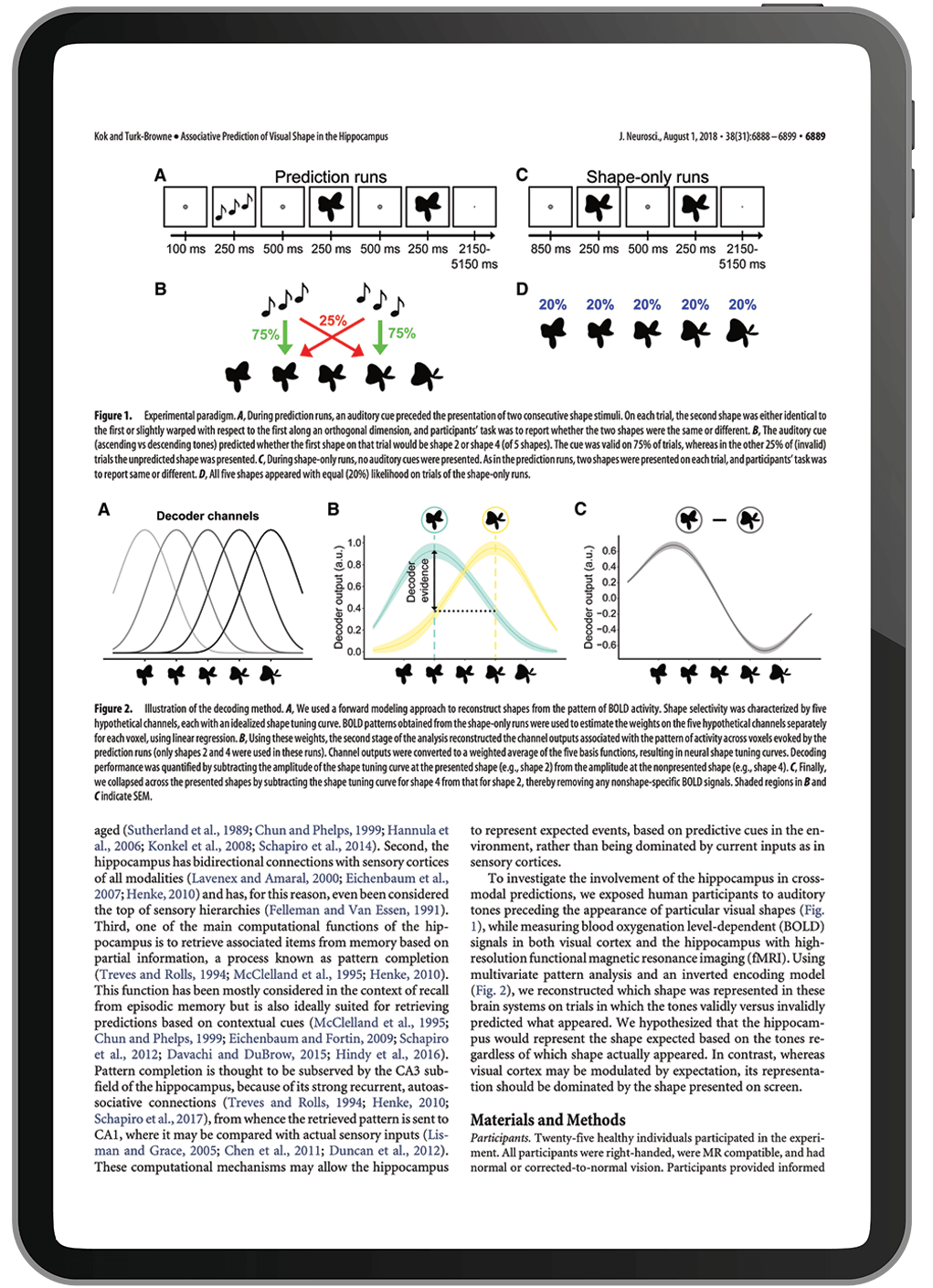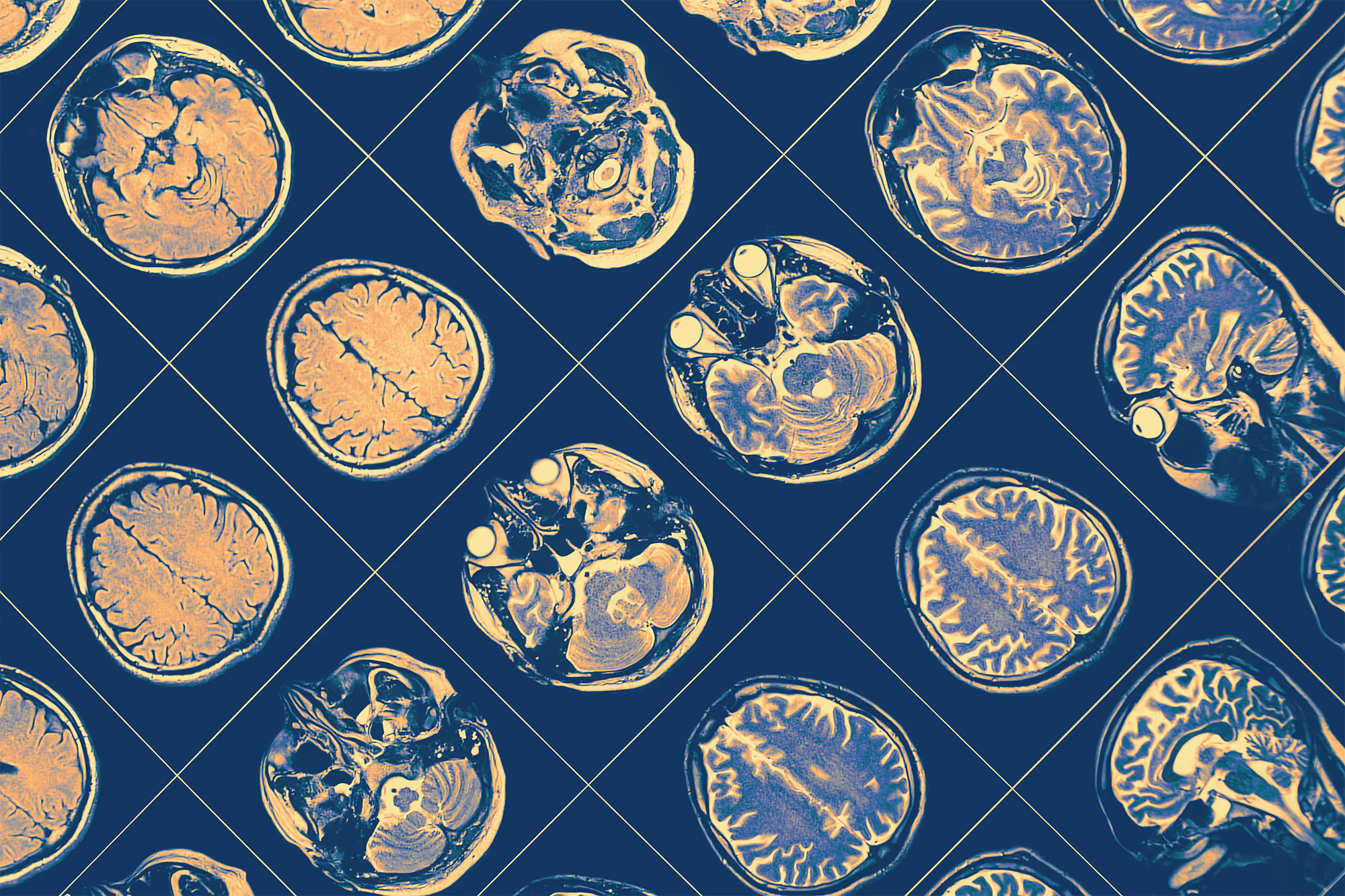Our Guiding Philosophy
The goal of cognitive neuroscience is to understand the mind and brain, and in practice this means studying specific components of cognition, such as attention, perception, learning, and memory. Often, though, these components are studied in isolation, and we risk missing the forest for the trees. The overarching theme of our research is that cognitive processes are inherently dynamic and interactive, and that exploring their behavioral and neural interactions, in developing, mature, and diseased states, can be an effective way to understand how they work. Below are some of our research programs that follow from this philosophy.
Statistical Learning
We repeatedly encounter the same people, places, and things, and over time they tend to show up in the same configurations and sequences. The process by which the mind automatically detects and represents these regularities is known as statistical learning. When encountering a new environment, statistical learning can help learn the relative locations of objects in a room, the boundaries between words in a language, and the sequence of landmarks on the way home.
The lab takes a multidisciplinary approach to studying statistical learning, including behavioral tasks, fMRI in healthy adults, computational modeling with neural networks, and studies of patients with brain lesions and brain implants. These complementary techniques have led to progress in understanding how statistical learning works and how it interacts with attention, memory, and spatial navigation.
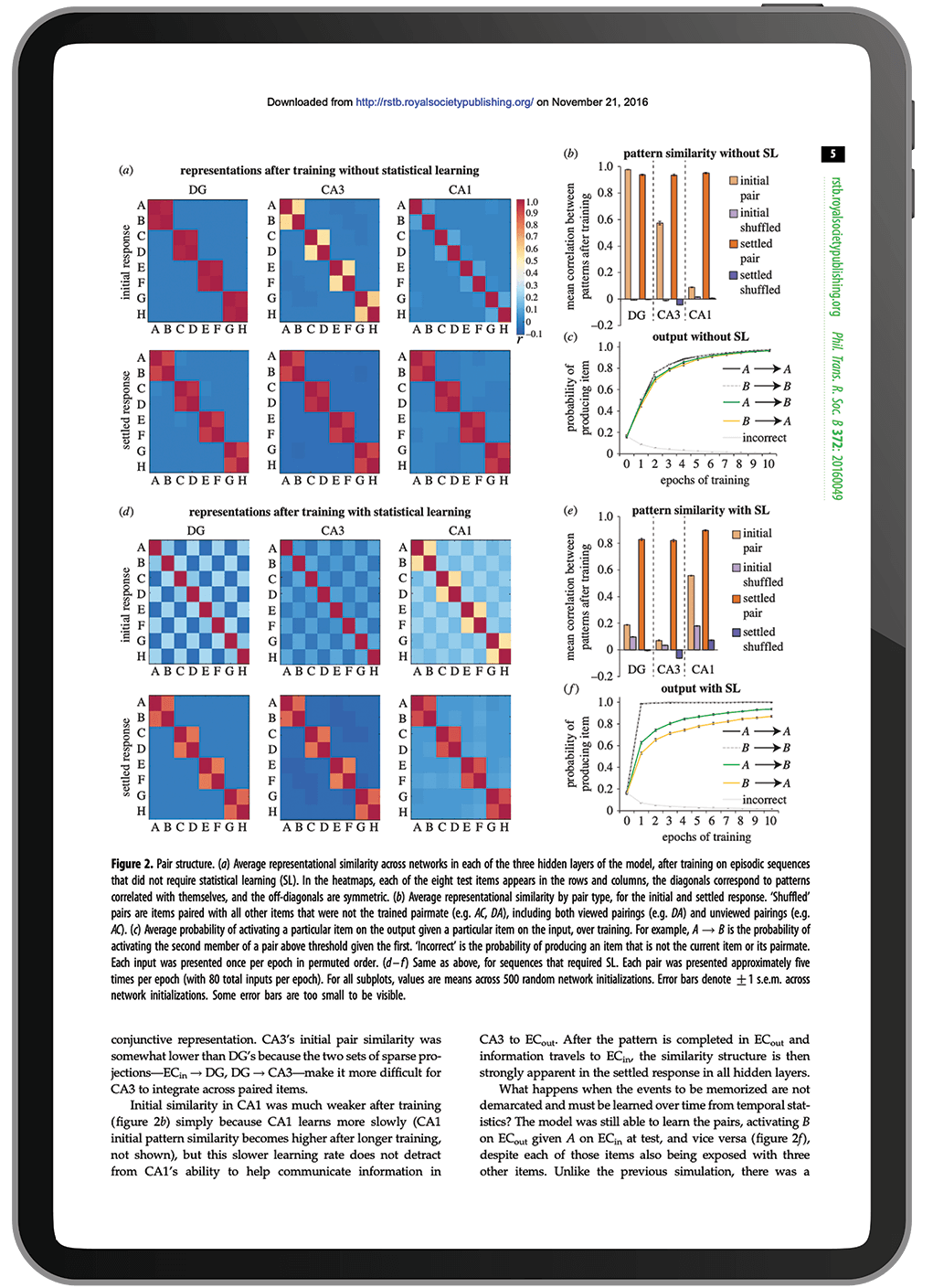
For example:
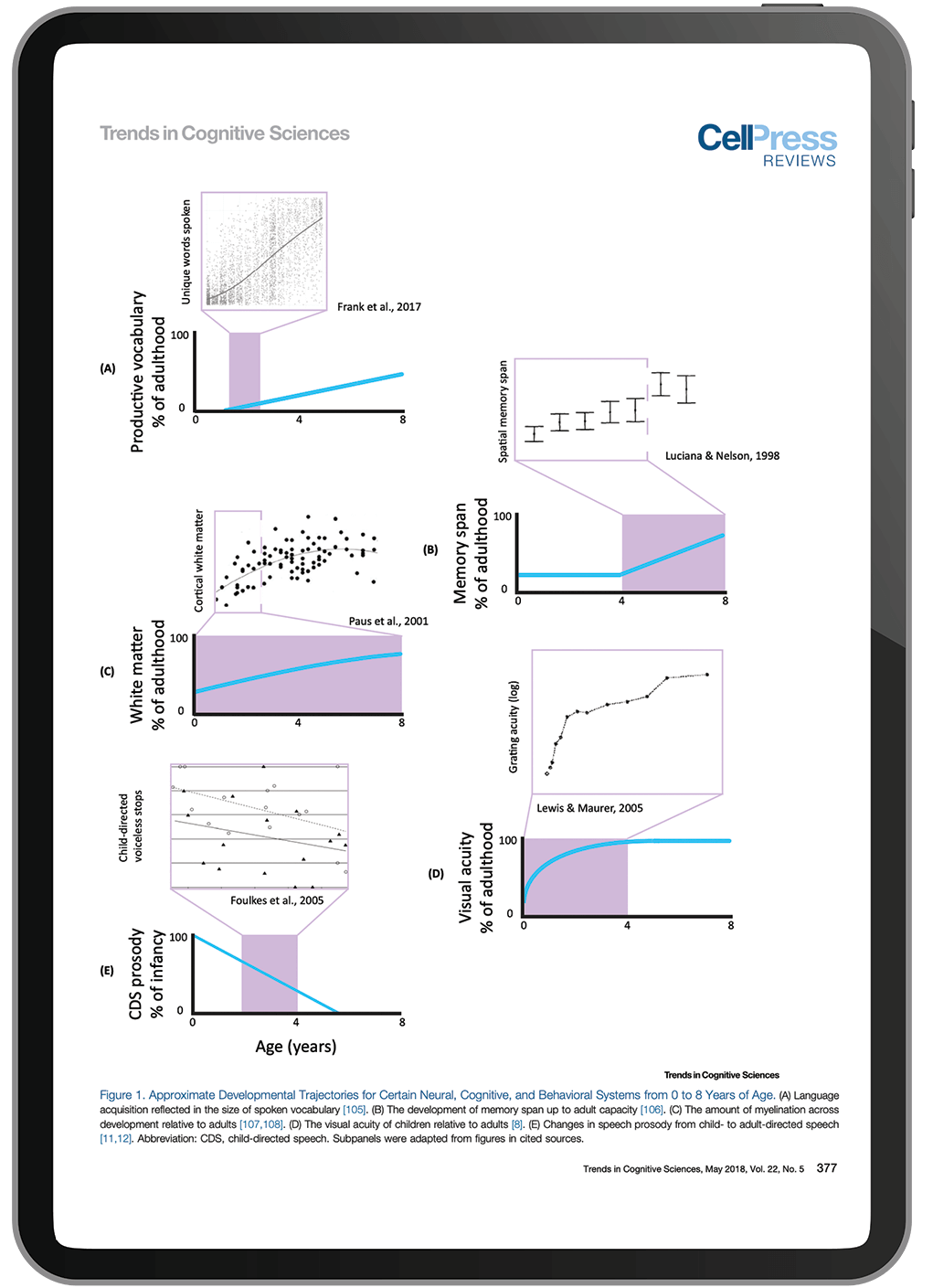
Infant Development
Cognitive neuroscience has revolutionized our understanding of the mind and brain in adults, adolescents, and school-age children. These advances were enabled by the arrival of new tools that safely record activity in the healthy human brain, particularly fMRI. However, because of practical challenges in using these tools in younger populations, much less is known about how the infant brain works.
The lab has pioneered methods for conducting fMRI studies in awake infants over the past decade, leading to a range of discoveries about infant cognition. A major focus has been on understanding how the infant brain learns and remembers. Infancy is a remarkable period for learning, when we acquire language, start walking, forge relationships, and develop preferences. And yet, humans remember almost nothing from this period later in life, what’s known as infantile amnesia.
For example:
Memory Competition
Memories do not exist in isolation, protected from each other like different files on a hard drive. Rather, new memories are stored on top of old memories, leading to overlap and interference in the brain. This can be helpful when we want to integrate experiences to build general knowledge. It can also be harmful when it is important to keep memories separate, such as to recall where exactly you parked your car today or which of your friends told you that juicy gossip.
The lab has studied how memories compete with each other in the brain. This includes discovering that the hippocampus, a key region for memory, helps avoid interference by pulling apart highly similar memories so far that they are treated as less related than unrelated memories. We have explained how memories change over time and through competition with the theory of nonmonotonic plasticity.
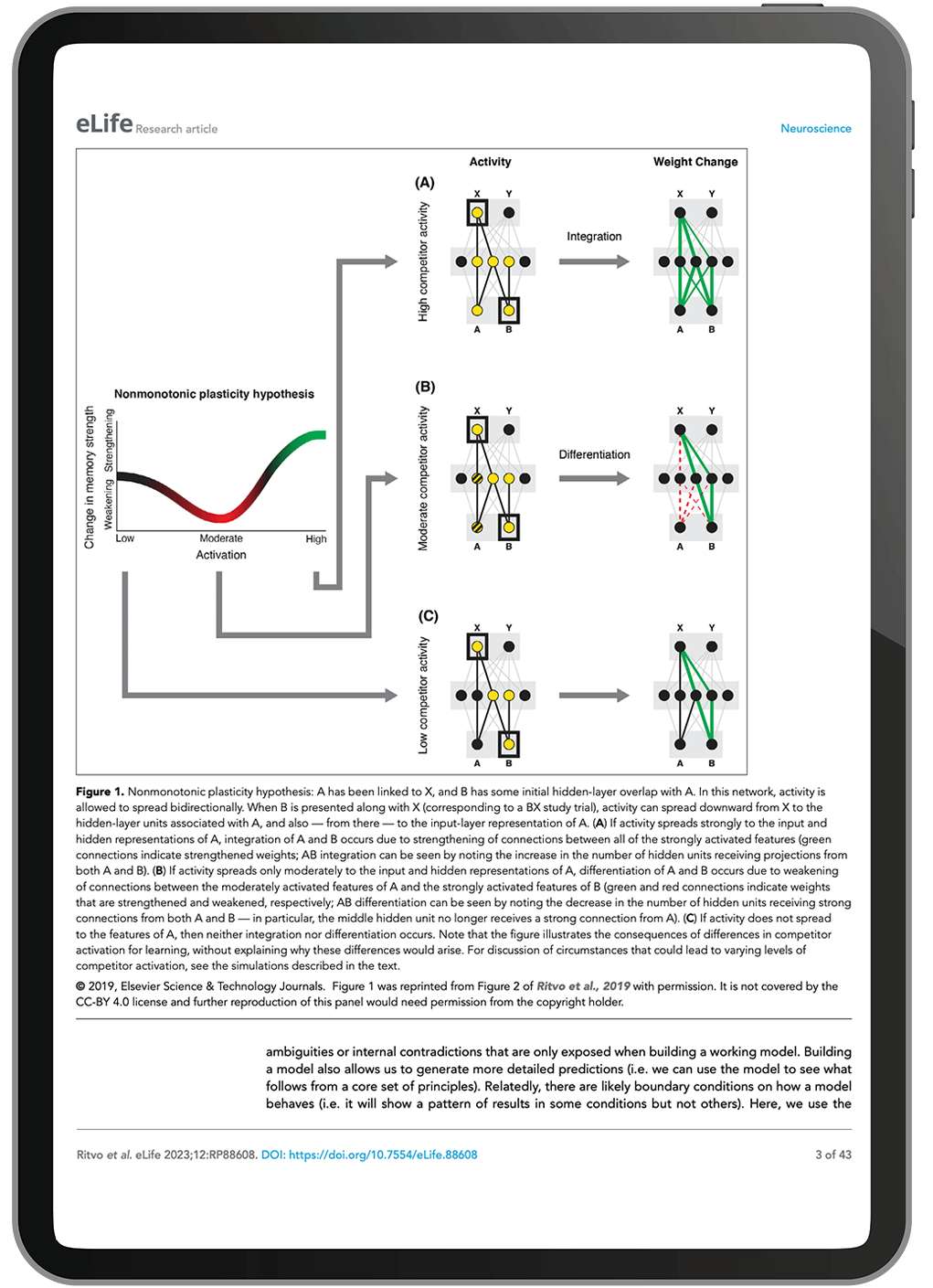
For example:
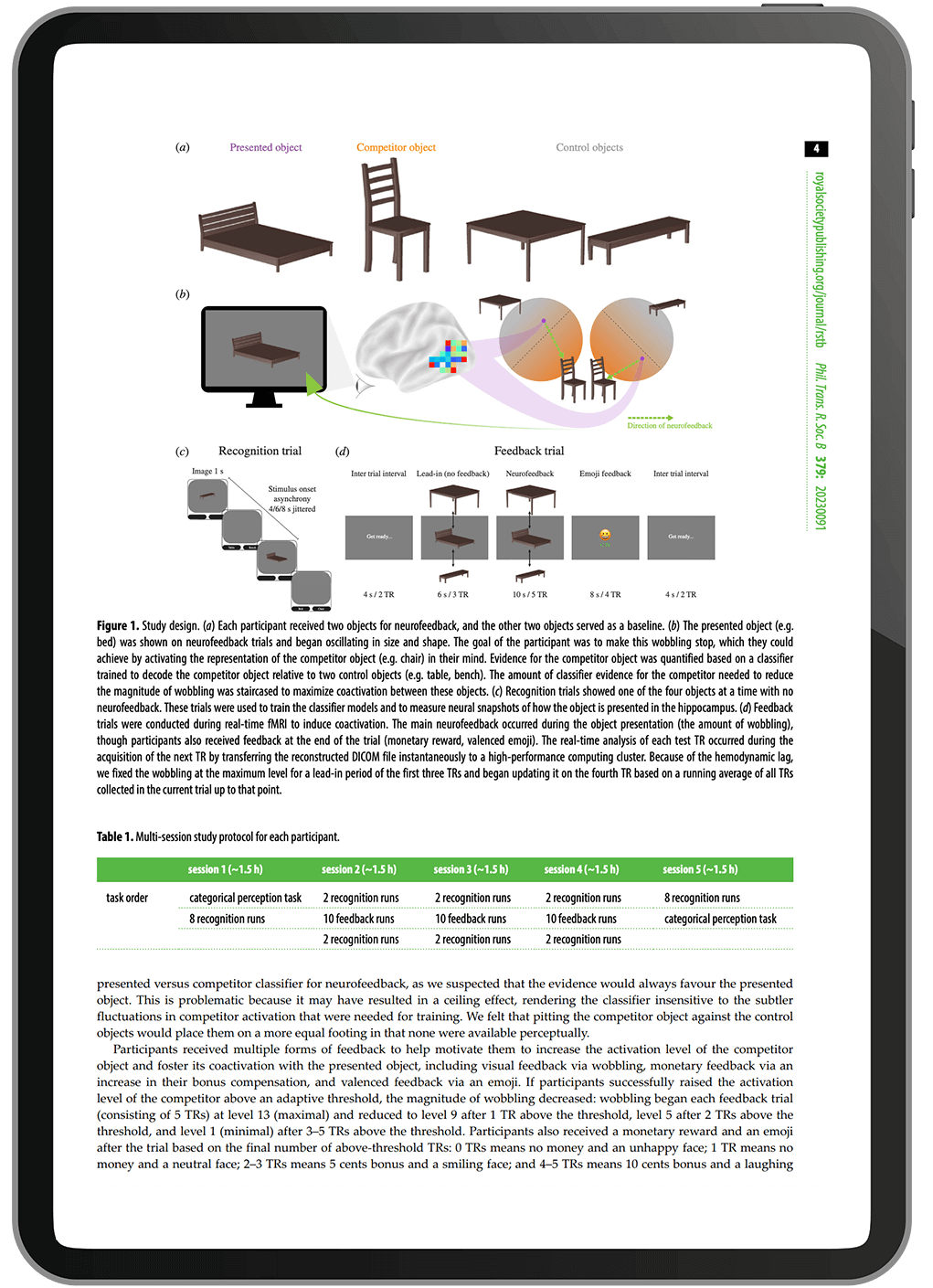
Cognitive Training
Cognition has many apparent limitations. We fail to see or hear things, we lose focus and get distracted, we forget vital information, and we make regrettable decisions. Are we stuck like this or is there room for self-improvement? If it was easy to train cognition, we’d already be better — we have countless hours of practice perceiving, attending, remembering, etc.
The lab has developed innovative approaches for training cognition by modulating the brain. This involves a form of brain imaging known as real-time fMRI, in which the data are analyzed immediately after being collected. The results of the analysis are then used as neurofeedback by updating what the participant is seeing or doing. Good and bad brain states can be rewarded and penalized, respectively, eventually leading to behavioral improvements.
For example:
Predictive Coding
What is the purpose of statistical learning and other forms of learning and memory? Intuitively, they help us understand the world and remember the past. But no two situations ever repeat exactly, so their real value is in allowing us to build on past experience to generate predictions about the future. These predictions not only help facilitate behavior, as our brain gets a head start on what is about to happen, but also help refine knowledge by testing out and revising mental hypotheses.
Prediction is typically studied in the context of perception, how expectations influence sensory processing. We have studied where these predictions come from. Treating prediction as an interface between perception and memory, we have shown with many of the techniques described above how past episodes and regularities are retrieved and reinstated in the brain.
